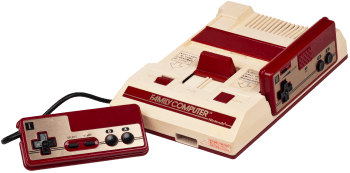Welcome to the Infendo Presents: The History of Nintendo! Join us as we chronicle Nintendo from their humble hanafuda beginnings, to the dominance of the Wii and DS and beyond!
When last we left Nintendo, the company was just starting to crawl out from behind their toy-making shadow with their entrance into the arcade market. At this point, many key people at the company were beginning to emerge whom would play a key role at Nintendo for many years to come.
Among those people was Gunpei Yokoi, who aside from Shigeru Miyamoto was probably the most influential people at early Nintendo. Already solidified as a crucial piece to the post-hanafuda Nintendo, Yokoi had his eyes set on a new emerging market, the handheld.
While observing a bored Japanese businessman playing with an LCD calculator in 1977, Yokoi came up with the idea of creating a watch that could also play miniature games to kill time. That idea later evolved into what would become the Game & Watch.
While simple in design, the Game & Watch line of games stood out from other competitors in the single game LCD screen market because of the quality of each said titles. Each Game & Watch features a single game that was displayed on an (and sometimes multiple) LCD screen while also having clock and and alarm capabilities.
Maybe one of the biggest takeaways from the Game & Watch line of games was the creation of the D-pad. Developed in 1982 by Yokoi for the Game & Watch version of Donkey Kong, the design would prove so popular that it was used in subsequent Game & Watch titles and eventually the Famicom.
In all, there are 60 titles in the Game & Watch line, with 59 of the title produced for retail sale and one that was only available as a contest prize. The Game & Watch is largely considered to be the first product from Nintendo to garner huge success, selling 43.4 million units globally.
That wouldn’t be Nintendo’s last success, however. Lurking in the shadows down at the Nintendo R&D labs was something that would change gaming forever.
In 1982 Nintendo developed a prototype for what would eventually become the Famicom dubbed “The Advanced Video System (AVS). The AVS, which is currently on display at the Nintendo World Store, featured controllers that looked similar to those of the Famicom. Designed more like a computer, the AVS had accessories such as a tape drive, a joystick, and a lightgun.
The AVS was never released, but was used as building blocks for the Famicom. Designed by Masayuki Uemura, the name Famicom actually came form Uemura’s wife. Code named the “GameCom,” Uemura’s wife suggested that perhaps Nintendo could say that it was a family computer, or Famicom for short.
Upon it’s initial Japanese release, the Famicom faced some difficulty straight out of the gate. Released in 1983, the Famicom was slow to gain momentum due to a bad chip set that cause the system to crash. Follinw a recall, the popularity of the Famicom grew, eventually becoming the best selling game console in Japan by the end of 1984
Retailing at the price of ¥14,800, the Famicom released alongside ports of successful Nintendo arcade games Donkey Kong, Donkey Kong Jr. and Popeye.
Following the success of the Famicom in the Japanese market, Nintendo of America would soon be under negotiations to bring the console stateside. Originally planned to be released under the Atari banner, Nintendo and Atari broke negotiations after the 1983 Consumer Electronics Show (CES).
As the legend goes, Atari was unhappy that Nintendo was demonstrating a port of Donkey Kong on the Coleco Adam computer. This led to the delay and eventual cancellation of the Atari branded Nintendo console, as Nintendo decided to market the system on its own.
At the 1985 CES, Nintendo would unveil the official American version of the Famicom and would rename the console the Nintendo Entertainment System, or the NES. The console would release to limited test markets starting in New York City on October 18, 1985, followed by a full North American release in February of 1986.
[youtube]https://www.youtube.com/watch?v=z4l7ZTwMYlw[/youtube]
One of the main differences between the Famicom and NES consoles was the NES’s ability to save games directly to the cartridge with the help of a built in batteries. To achieve the same functionality, Nintendo would release the Family Computer Disk System or Famicom Disk System (FDS) in Japan on February 21, 1986.
The FDS would plug into the expansion slot on the bottom of the Famicom, and used proprietary floppy disks for data storage. With the FDS also came an improved sound chip, something the NES would never receive.
The Famicom and it’s sister console the NES would go on to become a colossal success for Nintendo. By the end of its life cycle, the duo would go on to become the best selling video game console of its time selling 61.91 million units, far greater than anything that had come before.
That was, of course, until a company came along to disrupt the market once again with a new handheld console. One that would prove to be so successful that by the end of its life it would almost double the sales of the Famicom/NES.
Enter Game Boy.
Join us tomorrow as we continue our History of Nintendo series as we chronicle Nintendo’s next stab at the handheld video game market.


